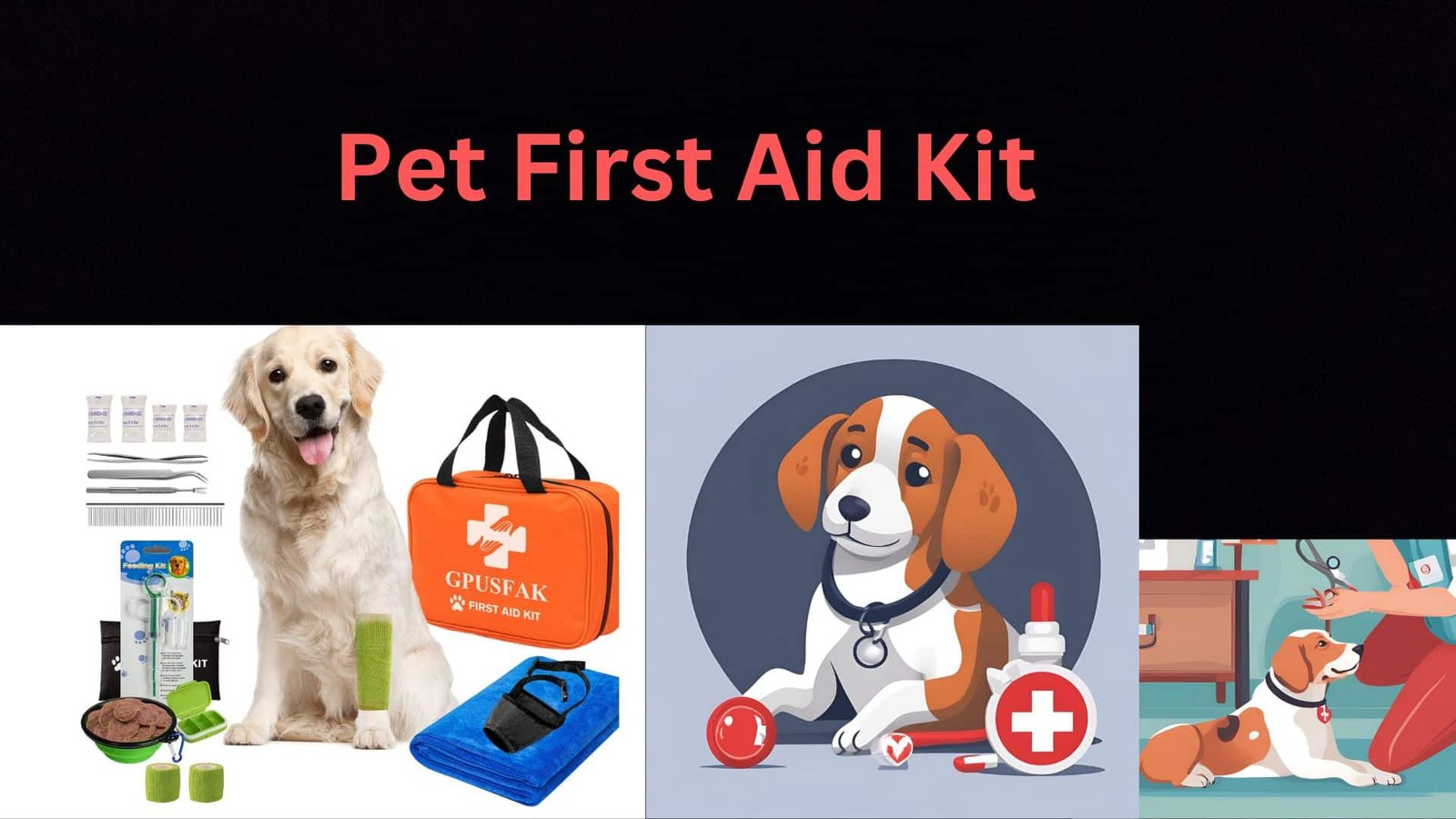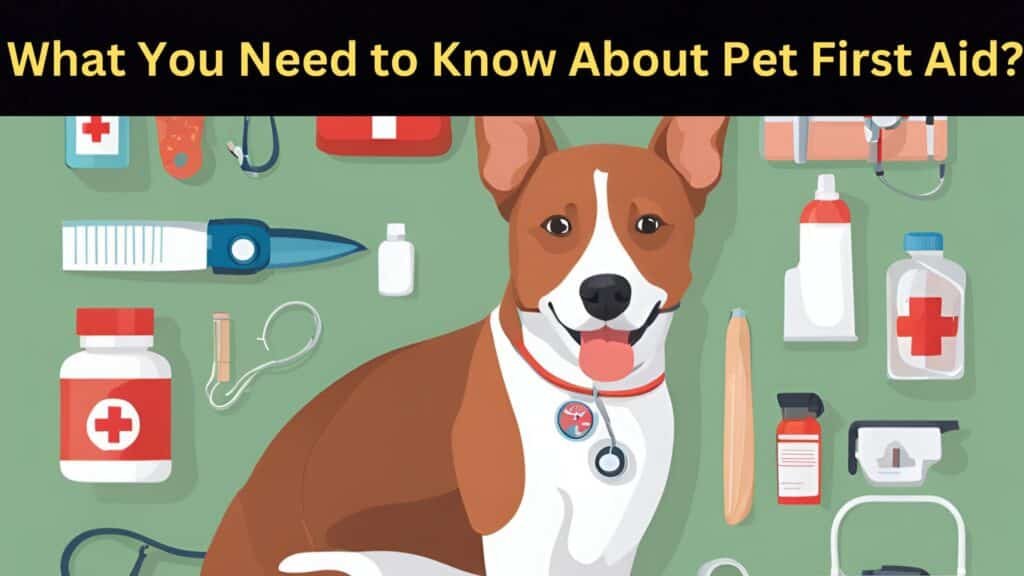Be prepared for pet emergencies with essential pet first aid tips! Learn how to handle injuries, and other urgent situations to keep your pet safe and healthy.
What You Need to Know About Pet First Aid? Tips Handle Pet Injuries
In the life of every pet owner, moments arise that test both your emotions and your ability to act swiftly and wisely. Understanding pet first aid is not just about responding to emergencies; it’s about preventing them and ensuring the well-being of our cherished companions. This comprehensive guide aims to arm you with the knowledge and tools necessary for emergency preparedness, potentially saving your pet’s life. Let’s explore what you need to know about pet first aid?
“This article contains affiliate links. We might get commissions from those links if you click through the link and finalize a purchase. Please read Disclosure section for more information.”
The Importance of Being Prepared
Imagine a serene afternoon turning chaotic when your beloved dog begins choking, or your cat suffers heatstroke on a particularly sweltering day. These scenarios are not just hypothetical but real risks our pets face. Being prepared with pet first aid knowledge is not just beneficial—it’s crucial.
Recognizing and Responding to Pet First Aid Scenarios
Choking
Choking can be life-threatening for pets. Signs include distress, pawing at the mouth, and difficulty breathing. If you notice these symptoms, act quickly but calmly. Open your pet’s mouth to see if the object is visible and safely remove it if possible. If not, you may need to perform a modified Heimlich maneuver on your pet.
Poisoning
Pets are naturally curious, which can lead them to ingest harmful substances. If you suspect your pet has been poisoned, contact your vet immediately. Keep samples of the substance ingested, as this will aid in quick diagnosis and treatment.
Heatstroke
On hot days, never leave pets in a parked car, and always ensure they have access to shade and water. Signs of heatstroke include excessive panting, drooling, and lethargy. Move your pet to a cooler area and apply cool (not cold) water to their body, then seek veterinary care promptly.
Essential Items for a Pet First Aid Kit
A well-assembled pet first aid kit is your first line of defense in an emergency. Your kit should include:
- Gauze pads and bandages
- Adhesive tape
- Cotton balls or swabs
- Ice pack
- Disposable gloves
- Tweezers and scissors
- Antiseptic wipes
- Syringe for administering medications or flushing wounds
- Emergency contact numbers (veterinarian, nearest animal hospital)

You can assemble your own kit or purchase one online from reputable pet supply stores. Here, I put some best reviewed pets first aid kit products from amazon. I use all of them for my pets. You can check this out for your pets-
Dog First Aid Kit | Vet Approved Pet First Aid– This pet first aid kit is stored in a strong, waterproof case with a well-fitting grip and a strong zipper. This product includes everything you need for your pet first aid.
- 1. ESSENTIAL FOR EVERY DOG & CAT OWNER: Be prepared for any pet emergency with a vet-reviewed pet first aid kit for peac…
- 2. VET REVIEWED FOR QUALITY CARE: All items in our kit are reviewed by veterinary professionals, ensuring accurate, pet-…
- 3. ONLY PET FOCUSED ESSENTIALS: Packed with necessary tools you need, like a tick remover, non-stick vet wrap, and a ste…
Emergency Kit Dog Essentials 100 Pieces with Thermometer and Mini First Aid Pouch– This first aid box includes emergency dog thermometer, collar, tick kit, guidebook, and a handy mini first aid kit pouch.
- ENSURE PET SAFETY ON THE GO with our dog travel accessories, dog must haves in pet travel. Our comprehensive pet first a…
- VET ENDORSED: Our Dog & Cat first aid kit, vet-reviewed for precision, is expertly crafted in a medical facility, provid…
- PET EMERGENCY ESSENTIALS: In addition to comprehensive pet first aid supplies, we include a dog thermometer, dog muzzle,…
Pet First Aid Kit for Dogs and Cats – You can provide both routine and emergency pet care with this kit, including cleaning wounds and giving food to your pet.
- A MUST-HAVE FIRST AID KIT FOR PETS — Do you have an active pet such as dog or cat? Then you definitely need this pet f…
- MEET YOUR BASIC NEEDS — With this kit, you can do the emergency care and daily pet care such as wound care and feeding…
- EASY TO CARRY AROUND — This bag is double zipper and double side storage, easy to open and find what you need. This pe…
Some First Aid Techniques
Bandaging a Wound
Clean the wound gently with water or an antiseptic wipe. Apply a gauze pad over the wound, then wrap it with a bandage. Ensure its snug but not too tight.
Performing CPR
If your pet is not breathing, CPR may be necessary. Lay your pet on their side, clear their airway, and perform chest compressions at a rate appropriate for their size. Follow this with mouth-to-snout rescue breaths.
Assessing Vital Signs
Knowing how to check your pet’s heart rate, breathing rate, and temperature can help you assess their condition. The normal heart rate and breathing rate vary depending on the size and species of your pet, so familiarize yourself with these before an emergency occurs.
Safely Transporting an Injured Pet
When transporting an injured pet, keep them calm and immobilized to prevent further injury. Use a stretcher or carrier and cover them with a blanket for comfort and warmth.
Learning More Through Pet First Aid Training
Pet first aid training can provide hands-on experience and confidence to handle emergencies effectively. Many organizations offer courses, both online and in-person, that cover a wide range of topics from basic care to advanced first aid techniques.
What should be included in a pet’s first aid kit?
For taking care pets, we need some first aid kits all time with us. Let’s explore which first aid kit we need and uses-
Sterile gauze pads: These are useful for controlling bleeding and cleaning and covering wounds.
Adhesive tape: This can be used to keep bandages in place and secure gauze pads.
Scissors: These are useful for cutting items like gauze and tape.
Antiseptic sprays: These help to keep wounds clean and free of infection.
Hydrogen peroxide: Should certain toxins be inadvertently consumed; this can be utilized to cause vomiting. It should, therefore, be applied under a veterinarian’s supervision.
Disposable gloves: You can shield your hands when giving first aid with these.
Rectal thermometer: This is useful for measuring the temperature of the canine.
Saline solution: This can be used to cleanse eyes and flush out sores.
Mask: A mask should be used in case the dog acts aggressively or becomes irritated while receiving therapy.
Benadryl: is a medication that can be used to treat allergic reactions.
Tweezers: Splinters, parasites, and other foreign items can be extracted from a dog’s skin with tweezers.
Conclusion
Preparing for pet emergencies with a solid understanding of first aid is an act of love and responsibility. By equipping yourself with the knowledge and tools highlighted in this guide, you’ll be ready to protect your furry family members in any situation. Remember, while first aid is a vital skill, it’s not a substitute for professional veterinary care.
For more in-depth information, consider signing up for a pet first aid course, and always consult your veterinarian if you’re unsure about your pet’s health. Your proactive approach to pet safety can make all the difference in an emergency. If you feel you are not able to take care your pets and want to give someone, but you do not know what needs to do next, you can read our article- what happens if you don’t want your dog anymore? Happy Pet Care!
Frequently Asked Questions
Q: How often should I check and update my pet’s first aid kit?
A: Review and restock your pet’s first aid kit at least once a year or after any emergency use.
Q: Can I use human first aid supplies on my pet?
A: While some human first aid supplies are safe for pets, always consult with a veterinarian before using any medication or product not specifically designed for animals.
Q: Where can I find pet first aid classes?
A: Many local and national organizations, including the Red Cross and various pet health organizations, offer pet first aid classes. Online resources are also available for those who prefer to learn at their own pace. Remember, knowledge is power—especially when







Pingback: How to Keep Your Pets Warm During Winter? - Pet Buddies Care